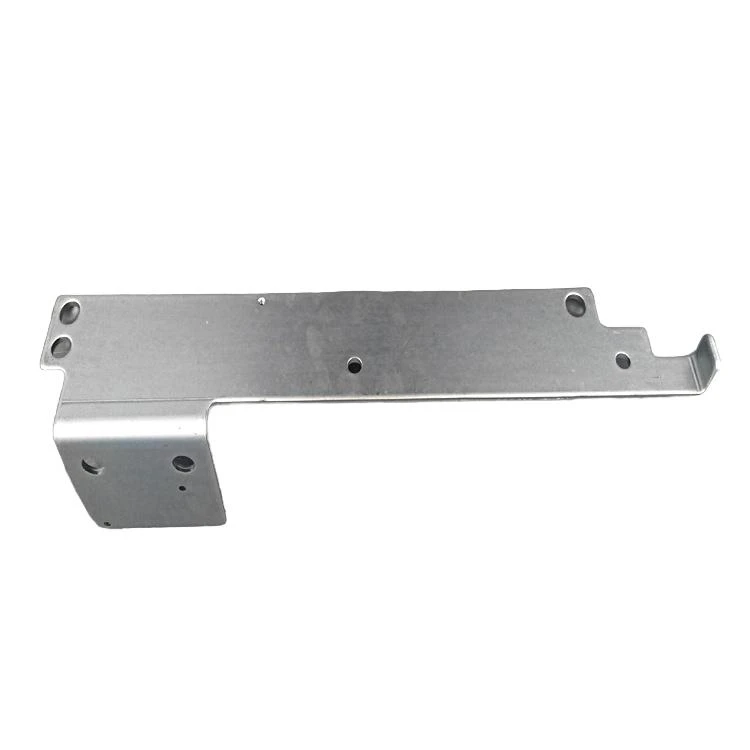prototype zinc die casting
Prototype Zinc Die Casting An Introduction
In the realm of manufacturing, prototyping plays a pivotal role in product development and design validation. Among the various materials and methods employed, zinc die casting has gained prominence due to its unique properties and benefits. This article explores the essentials of prototype zinc die casting, its advantages, applications, and the subsequent impact on the manufacturing process.
Understanding Zinc Die Casting
Zinc die casting is a process that involves forcing molten zinc into a mold to create intricate parts with high precision. This method is particularly favored for its ability to produce complex geometries that are often difficult to achieve with other materials and processes. Zinc, as a metal, offers a favorable combination of strength, durability, and corrosion resistance, making it a suitable choice for a wide range of applications. Prototyping using zinc die casting allows manufacturers to rapidly test and iterate designs before moving on to mass production.
The Prototyping Process
The prototype zinc die casting process can be broken down into several key steps
1. Design and CAD Modeling The first step involves creating a detailed Computer-Aided Design (CAD) model of the part. This model serves as the blueprint for the prototype. Designers must consider factors such as weight, thickness, draft angles, and surface finish, ensuring the design is optimized for the die casting process.
2. Mold Fabrication Once the design is finalized, molds are produced, usually from steel or aluminum. These molds must be crafted with precision, as their quality directly affects the final product's accuracy. In scenarios where rapid prototyping is necessary, aluminum molds are commonly used due to their shorter lead times and lower costs compared to steel molds.
3. Casting Process The molten zinc is then injected into the prepared mold under high pressure. This rapid injection fills intricate details and produces parts with tight tolerances. A cooling period follows to allow the zinc to solidify, after which the mold is opened, and the prototype is extracted.
4. Post-Processing Post-casting operations may include trimming excess material, surface finishing, and any necessary heat treatments. These steps ensure that the prototype meets the desired specifications and quality standards.
Advantages of Prototype Zinc Die Casting
prototype zinc die casting

1. Precision and Detail Zinc die casting can achieve complex shapes and fine details with exceptional accuracy. This makes it ideal for components requiring intricate designs.
2. Material Properties Zinc alloys offer outstanding mechanical properties, including good strength, excellent corrosion resistance, and improved manufacturability. Moreover, zinc’s lower melting point allows for reduced energy consumption during processing.
3. Time and Cost Efficiency Prototyping with zinc die casting often results in shorter development cycles. Rapid iterations mean faster feedback on design concepts, leading to quicker market introduction.
4. Sustainability Zinc is a recyclable material, and die casting contributes to sustainable manufacturing practices. Reclaiming and reusing zinc scrap reduce material waste and environmental impact.
5. Surface Finish Parts produced through zinc die casting typically exhibit superior surface finishes, often requiring minimal additional treatment, which can save time and cost in the finishing process.
Applications of Prototype Zinc Die Casting
The versatility of zinc die casting means it has numerous applications across different industries. Common sectors that benefit from this process include
- Automotive Industry Components such as gears, housings, and brackets. - Consumer Electronics Housings for gadgets and devices where both aesthetics and durability are crucial. - Aerospace Parts that require both lightweight and strength, contributing to overall efficiency and performance. - Industrial Equipment Custom parts and components that witness high wear and tear in operational settings.
Conclusion
Prototype zinc die casting is an invaluable technique in modern manufacturing, streamlining the process of design validation and product development. With its combination of precision, material benefits, and efficiency, it stands out as a preferred choice for prototyping complex components across various industries. As technology advances and industrial demands evolve, zinc die casting is likely to play an even more significant role in the future of manufacturing innovation.
-
Precision Casting AI Solution with GPT-4-Turbo | Optimized QualityNewsAug.02,2025
-
Precision Sheet Metal Stamping Manufacturer | Fast & ReliableNewsAug.01,2025
-
OEM Sand Cast Pump Valve Fittings - Baoding Hairun Machinery And Equipment Trading Co., Ltd.NewsAug.01,2025
-
Custom OEM Impellers | High Efficiency & PrecisionNewsAug.01,2025
-
OEM Sand Cast Pump Valve Fittings - Baoding Hairun Machinery | Customization, Quality AssuranceNewsAug.01,2025
-
OEM Sand Cast Pump Valve Fittings - Baoding Hairun Machinery And Equipment Trading Co., Ltd.NewsAug.01,2025















